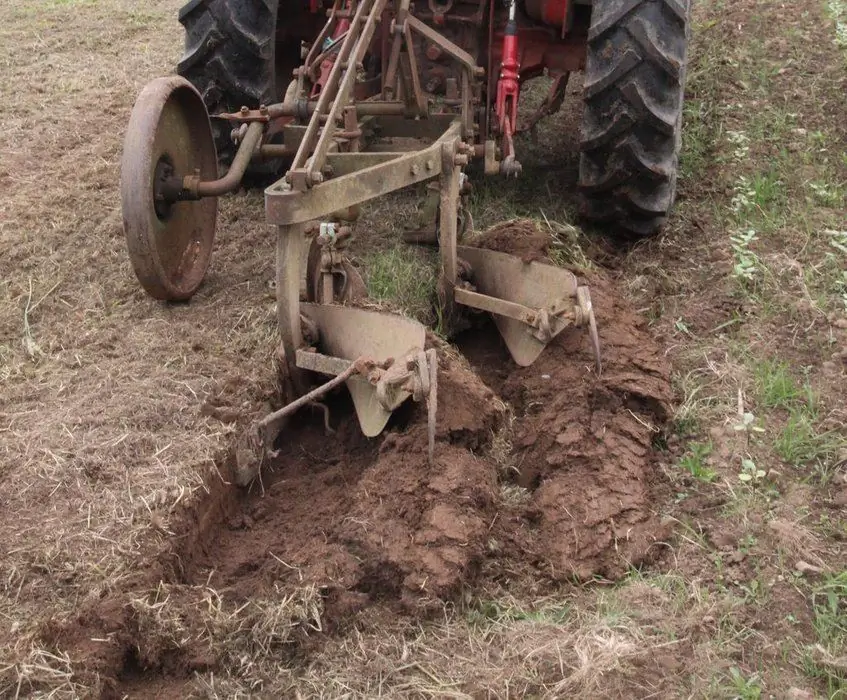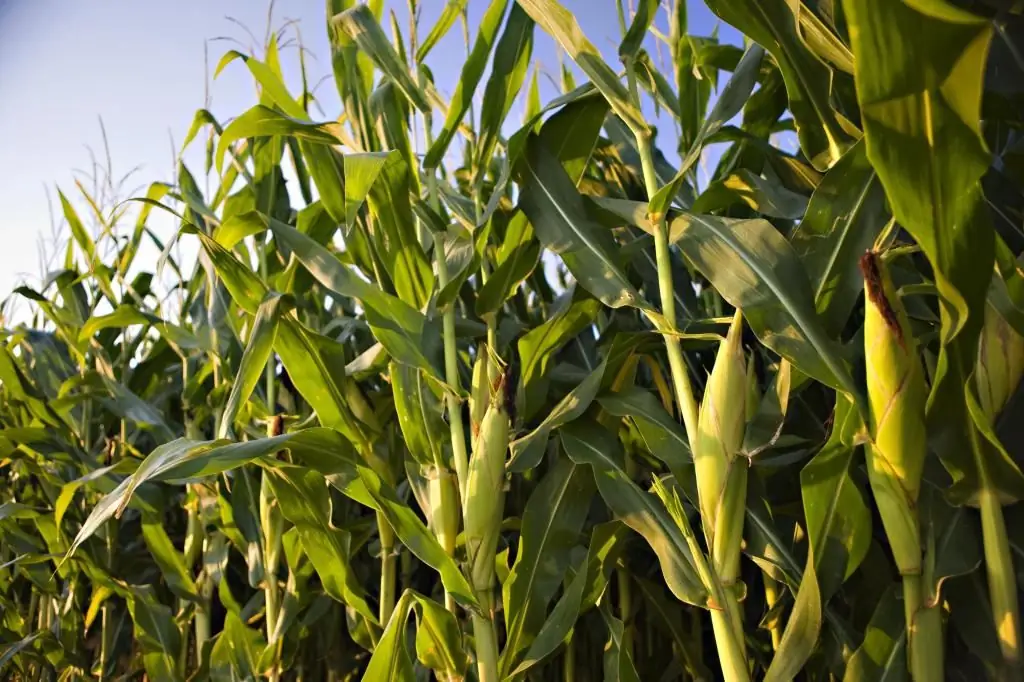2026 Author: Howard Calhoun | [email protected]. Last modified: 2025-01-24 13:10:41
Buckwheat is one of the most popular agricultural crops in Russia, Ukraine, Belarus, as well as in some Asian and European countries. The proteins contained in such grains are more complete than those of most other cereals. The yield of this crop, with the right approach to business, can be very high.
Buckwheat grain is widely used in Slavic, Oriental and French cuisines. In addition, this cereal is considered an excellent honey plant. For thousands of years, this crop has been cultivated by peasants by hand. Today, when growing it, of course, tractors, combines and various attachments are used. And of course, at the moment, some farms in our country use innovative technologies for growing buckwheat.

What is the traditional method
Using conventional technology, buckwheat is grown like this:
- in autumn, followinggrain harvesting, soil stubble;
- spring harrowed plowing;
- carry out 2-3 cultivations with harrowing and rolling;
- when sowing buckwheat itself, nitrogen, phosphorus and potash fertilizers are integrated into the soil.
Planting when using the standard technology of cultivating buckwheat for grain is carried out after the soil warms up to a temperature of +10 … + 12 ° С at a depth of 8-10 cm. Usually this is the end of May - the beginning of June. When planting, the seeds are planted to a depth of 7-8 cm. This crop is sown using the row or wide-row method.
Traditional care technology
After sowing the seeds during the vegetation period, the following operations are performed:
- pre-emergence harrowing 3-5 days after sowing;
- post-emergence harrowing in the phase of appearance of 1-2 leaves;
- two inter-row treatments - in the phase of the second true leaf to a depth of 5-6 cm and in the budding phase to a depth of 5-7 cm;
During the second inter-row treatment, fertilizing with nitrogenous fertilizers of 20 kg/ha is done. Sometimes instead of nitrogen compositions on buckwheat plantings, UAN is used at a dose of 20 kg/ha in combination with growth regulators. In case of severe clogging, herbicides are used.

What modern methods are popular
The main disadvantage of the traditional cultivation of this crop is the large labor and material costs during pre-sowing preparation, as well as sufficientserious crop losses at harvest. Innovative technologies for growing buckwheat allow you to control the formation of its crop, as well as the quality of grain. When applying such techniques, the degree of resource use increases:
- material;
- labor;
- agro-climatic.
The following innovative technologies can be used in the cultivation of this crop, for example:
- resource-saving;
- combined;
- with sowing in two terms.
Prototype is another name for the first innovation. The technology of cultivating buckwheat according to this method is used in our country today by many farms. The combined technique involves a combination of innovative methods of tillage and new methods of sowing. Losses of grain when using this technique are minimal. The last way to grow buckwheat involves sowing grain in the spring in two terms.
Resource-saving technique: planting
When using this modern technology of buckwheat cultivation, the following operations are performed before planting:
- autumn plowing to a depth of 20-22 cm or surface and flat-cut processing;
- pre-sowing treatment;
- cultivation with harrowing and rolling when weeds appear.
In the event that the fields using this technique were processed with flat cutters, in the spring they are rolled up with needle harrows. Fertilizers in the soil in springwhen applying this technique, they contribute three times:
- before sowing;
- in rows when sowing;
- 15 days after planting.
Seeding methods in this case can also be used row or wide row. At the same time, the seeds are buried in the soil by 5-6 cm.

Crop care using resource-saving technology
When applying this technique, buckwheat is fed only once during the growing season - before flowering. At the same time, as in the traditional method, nitrogenous or complex fertilizers are used. Care operations when using this technology for growing buckwheat are as follows:
- post-sowing packing;
- pre-emergence harrowing and when forming rows;
- cultivating row spacing.
For better pollination of flowers, when using this technique, hives are installed in the fields with buckwheat. At the same time, they are brought up 1-2 days before the opening of the buds. 2-3 full-fledged families are placed on 1 ha of plantings. Install hives no further than 0.5 km from crops. The method of harvesting buckwheat when using this technique is used separately. Start this procedure when 75% of the fruits are brown.
What is a separate cleaning method
In this case, the equipment is usually driven out to the fields with buckwheat a few days earlier than when using the direct combining method. At the same time, the plants are mowed with a harvester and rolled into rolls. In this way,buckwheat is dried and gradually fully ripens. 2-3 days after harvesting, the grain threshing procedure begins. This method allows to reduce the loss of buckwheat grain, in comparison with direct combining, at times. However, in this case, part of the crop is still lost.

Flaws of technology
The main disadvantage of the prototype - back in the last century, Soviet scientists scientifically based technology of buckwheat cultivation - as well as the traditional method, is sowing in one time. In this case, there is a risk of yield reduction, for example, due to dry weather during the flowering period. Also, the disadvantages of this method are uneven pollination, which affects the commercial qualities of grain. When the hives are located near the field, the bees prefer to visit the closest plants. Growing closer to the center, buckwheat is pollinated, and, accordingly, ripens later.
The disadvantage of the prototype method, as well as the traditional one, is also quite significant losses during harvesting. Separate harvesting technique saves more grain than direct combining. But in this case, part of it, as already mentioned, remains on the field.

Two term sowing method
When using this innovative cultivation technology, buckwheat is planted for the first time on May 25-29, when there is still a lot of spring moisture in the soil. The second sowing is done on June 7-10 at the onset of sustainable warming. In this case, one of the blooms with a high degree of probabilitycoincides with favorable weather conditions.
At the right time, when using this technology, beehives with bees are brought to the fields and placed frontally in one row along the field. Next, artificial pollination is performed 3-4 times using, for example, an artificial shovel with a front-end working part. When performing such work, air and mechanical effects on plants are provided, as a result of which active cross-pollination occurs. Thus, uniform maturation of grain in the fields is achieved, which improves its quality and reduces losses. Harvesting using this innovative technology of buckwheat cultivation is carried out in a separate way.
Combined technique
In this case, buckwheat planting material is planted in the fields once every two years. In this case, sowing is carried out at a later date. This allows you to completely eliminate the risk of yield reduction due to return frosts. Buckwheat care when using this technology is standard. Harvesting in the first year of cultivation is carried out by direct combining. The result is that the carrion is distributed fairly evenly across the field.
In the spring, on a field with buckwheat, before its germination, harrowing is carried out in order to obtain seedlings with a density of 2-3 million plants per 1 ha. That is, the soil in the second year practically does not have to be cultivated, which significantly reduces the cost of growing a crop. In addition, when using this method, a significant part of the seed material is saved.
When applying thistechnologies of growing buckwheat, care for plants is carried out in the traditional way. Harvesting in the second year is carried out according to a separate method. Subsequently, the two-year cycle of growing buckwheat is repeated. It is believed that this method of cultivation allows to increase the yield of this crop by 3-4 c/ha.
Characteristics of buckwheat
This plant has been cultivated by man for several millennia. Of course, the biological characteristics of buckwheat are also determined by the technology of cultivation of this crop. This agricultural plant differs from many other cereals popular in our country in that it loves moisture very much. When grown, this crop consumes, for example, 2 times more water than wheat, and 3 times more than millet.

The growing season for buckwheat is very short. It can germinate already at a temperature of + 7 … + 8 ° С. However, simultaneous seedlings of buckwheat appear when the air warms up to + 15 … + 22 ° С. The optimal temperature for growing this crop is considered to be + 16 … + 18 ° С. At the same time, buckwheat develops best and bears fruit at a moisture content of more than 50%.
Feeding
Weak root system is also one of the features of buckwheat biology. The technology of cultivation of this crop should, of course, provide for this factor as well. This plant develops very quickly and actively. Accordingly, when growing it, it is necessary to use various kinds of top dressing. After all, to collect a sufficient amount of nutrients, weak buckwheat roots from poor soil simply cannotcan.
It is believed that in order to obtain a good harvest of such a crop for a season, it is necessary to apply 1 ton of grain to the soil:
- nitrogen - 44 kg;
- phosphorus - 30 kg;
- potassium - 75 kg.

Precursors
Since buckwheat is a very demanding crop in terms of soil quality, the place for its cultivation should be chosen as carefully as possible. It is believed that the best predecessors for this agricultural plant are:
- cereals;
- legumes;
- beets;
- linen;
- row crops.
In dry regions, buckwheat is often planted in bare fallow.
Recommended:
Innovative product: technology and classification

In modern conditions, innovation is an essential condition for improving the efficiency of enterprises. External factors are characterized by uncertainty and dynamism, and the development of companies is always accompanied by high risk. Meanwhile, the rejection of innovation can lead to quite serious negative consequences
Innovative ideas: examples. New business ideas

Business does not stand still. His progress lately has no limits. What to expect in the near future?
Innovative project: example, development, risks and performance evaluation. Innovative projects at school or in business

An innovative project is a complex system of actions aimed at achieving certain goals in the development of science and technology. They are interconnected by the executors of the activities, deadlines and resources. An innovation program is a complex of interrelated innovation projects, as well as projects that are aimed at supporting activities in this direction
Spring wheat: cultivation technology, features of sowing, cultivation and care

About 35% of all grain plantings on the planet today falls on wheat. In purchases, the share of such grain is 53%. Technologies for growing spring wheat in Russia can be used differently. But when cultivating this crop, crop rotation must be observed and careful preliminary preparation of the soil must be carried out
Corn: cultivation technology, features of planting, cultivation and care

Every one of our compatriots has seen and tasted corn. However, not everyone thinks about how important culture it is. Therefore, tell about it in more detail. We will also dwell briefly on the technology of corn cultivation - it will be very useful for novice farmers to learn about this

